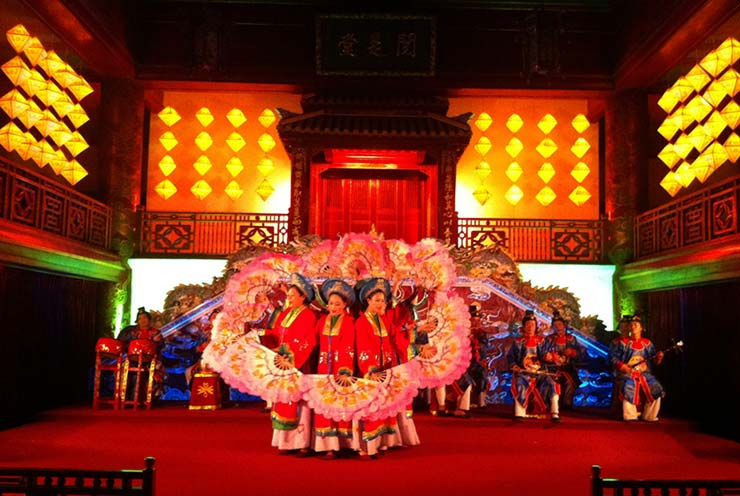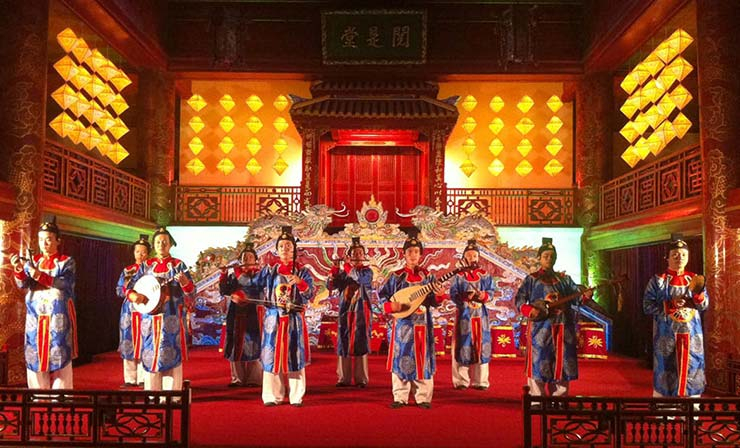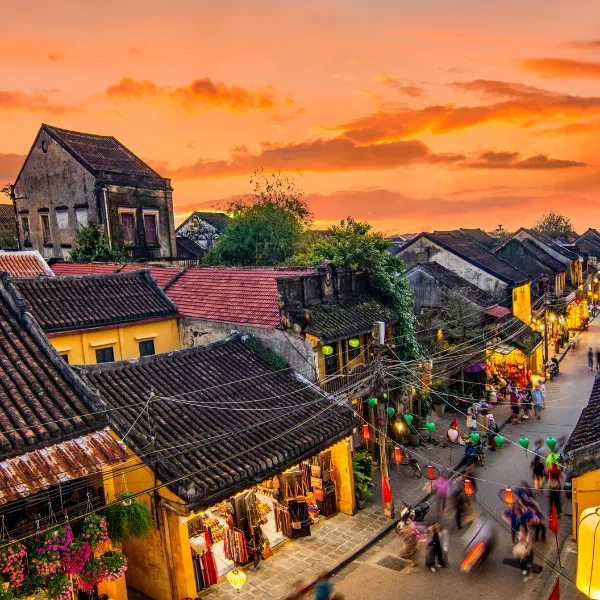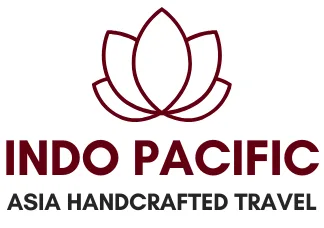
Top 5 Reasons to Experience Vietnamese Royal Court Music – A Timeless Cultural Treasure in Hue
What Is Vietnamese Royal Court Music?
article content
Vietnamese royal court music, known in Vietnamese as Nhã nhạc cung đình, is a sophisticated and highly ceremonial genre of traditional music performed during major rituals of the Vietnamese monarchy. It is considered one of the most elegant and spiritually meaningful art forms in Vietnamese history.
This genre of music originated in the 15th century, flourishing under the reigns of successive emperors, especially during the Nguyen Dynasty. For hundreds of years, this royal music was performed only in the courts, particularly during festivals, religious ceremonies, royal receptions, and state occasions. Today, although the monarchy no longer exists, this music lives on as a cultural treasure, protected and celebrated across Vietnam.
In 2003, UNESCO recognized Vietnamese royal court music as an Intangible Cultural Heritage of Humanity, emphasizing its historical importance and global value.
The Historical Origins of Royal Music in Vietnam

Vietnamese royal court music was born from the need to express solemnity, hierarchy, and harmony in the royal court. Each dynasty contributed to its evolution, but it was under the Nguyen Dynasty (1802–1945) in Hue, the imperial capital, that this musical tradition reached its peak in terms of complexity, refinement, and importance.
In the feudal system, the Emperor was considered the “Son of Heaven”, and royal rituals reflected the connection between the heavens and the earthly world. Music played a vital role in reinforcing that connection. Vietnamese royal court music symbolized power, peace, longevity, and prosperity—the very values that the dynasty wished to convey.

Key Characteristics of Vietnamese Royal Court Music
Vietnamese royal court music is not simply a musical performance—it’s a spiritual and ceremonial act, combining:
-
Instrumental orchestras
-
Court dances
-
Singing
-
Elaborate costumes
-
Symbolic movements
Each element is crafted to deliver a message of respect, elegance, and order. The instruments are carefully selected for their timbre, tone, and symbolism.
Traditional Instruments in Royal Court Music
The Vietnamese royal orchestra features a variety of traditional instruments, including:

-
Đàn Tranh (16-string zither) – represents grace and femininity
-
Đàn Tỳ Bà (pear-shaped lute) – symbolizes elegance
-
Sáo Trúc (bamboo flute) – creates airy, peaceful tones
-
Trống (drums) – used to maintain rhythm and signal transitions
-
Kèn Bầu (oboe) – delivers rich, haunting melodies
-
Đàn Nhị (two-string fiddle) – emotional and expressive
These instruments are played in harmony by highly trained musicians, often accompanied by traditional court dancers.
Rituals and Forms: A Spiritual Expression
There are three main forms of Vietnamese royal court music:
-
Đại Nhạc (Great Music) – Played at major state ceremonies and royal festivals
-
Tiểu Nhạc (Small Music) – Used for daily rituals or less formal court events
-
Múa Cung Đình (Court Dances) – Symbolic dances that interpret values like harmony, love, and spiritual blessings
Notable Performances:
-
Fan Dance (Vũ phiến): Symbolizes grace and is often performed at royal weddings or banquets.
-
Lantern Dance (Lục cung hoa đăng): Originally a Buddhist ritual offering dance, later adapted for royal celebrations.
-
Ghost Banishing Dance (Hữu Biên Vô Hình): A dramatized performance symbolizing the banishment of evil spirits and protection of the people.
Each performance is meticulously choreographed, requiring exceptional coordination, discipline, and concentration. Dancers and musicians are often dressed in luxurious garments that reflect the color codes and symbolism of the imperial court.
Where to Experience Vietnamese Royal Court Music Today
Today, Vietnamese royal court music can still be enjoyed in Hue, where many cultural preservation efforts have been made to revive and maintain this beautiful tradition.
1. Duyệt Thị Đường Theater – Imperial Citadel of Hue
This is the oldest royal theater in Vietnam, built nearly 200 years ago. It served as the performance space for kings and the inner court. Now open to the public, it regularly hosts authentic Nha Nhac performances. Watching a live show here allows you to truly step back in time and experience the atmosphere of a royal celebration.
2. Perfume River Boat Ride with Nha Nhac
Another unique way to enjoy Vietnamese royal court music is by taking a dragon boat ride along the Perfume River in the evening. As the boat gently floats down the river, local artists perform Nha Nhac by candlelight, providing a serene and unforgettable cultural experience.
3. Hue Festival and Cultural Events
Every two years, Hue hosts the Hue Festival, which features royal music performances, court dances, and other traditional arts. This is a must-see event for anyone interested in Vietnamese heritage.
Why Vietnamese Royal Court Music Matters
Vietnamese royal court music is more than a performance—it is a living museum of Vietnam’s imperial culture. It preserves not only melodies and rituals but also:
-
The philosophy of Confucianism and Buddhism
-
The aesthetics of ancient Vietnam
-
The values of harmony, order, and spiritual depth
Its continued existence today reminds us of the importance of preserving intangible heritage, especially in a fast-changing modern world. For the Vietnamese people, it is a source of pride. For global travelers, it is an invitation to discover Vietnam’s deeper soul.
Tips for Visitors
-
Book in advance if you want a seat at Duyet Thi Duong performances
-
Wear respectful clothing when attending shows inside cultural sites
-
Combine a visit to the Imperial Citadel, Thien Mu Pagoda, and a Nha Nhac performance for a full cultural itinerary
-
Ask your guide about the meanings behind each dance or instrument—there’s always a story
Final Thoughts
Whether you’re a culture lover, music enthusiast, or curious traveler, experiencing Vietnamese royal court music in Hue will leave you with a profound appreciation of Vietnam’s royal traditions. It’s not just music—it’s the heartbeat of an ancient civilization still echoing through time.
So next time you visit Hue, don’t miss the chance to be transported by the elegant, sacred sounds of this UNESCO heritage.
Recent Posts
Dong Thap Lotus – Discover the Land of the Pink Lotus in Vietnam 🌸
Phong Nha Travel – The Ultimate Vietnam Adventure Guide
A Swiss Couple’s Vietnam Travel Journey – 15 Days of Culture, Cuisine, and Natural Wonders
All Categories
- CaMau (1)
- DaLat (1)
- DaNang (3)
- Explore Vietnam (61)
- Food & Drink (20)
- food tour VietNam (3)
- GiaLai (1)
- HaGiang (4)
- HaiPhong (2)
- Halal Dining in Vietnam (2)
- HaLong Bay (3)
- Hanoi (7)
- Ho CHi Minh City (1)
- HoiAn (1)
- hue (2)
- LamDong (1)
- Nam du Island (1)
- NinhBinh (1)
- PhuQuoc (1)
- Travel Tips & Guides (2)
- Uncategorized (1)
- Vietnam (1)
- Vietnam Culture & Lifestyle (3)
- Vietnam Travel Planning (4)
- YenBai (1)
Tags







